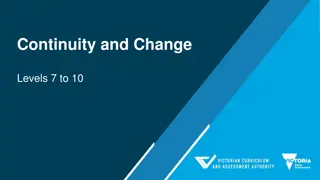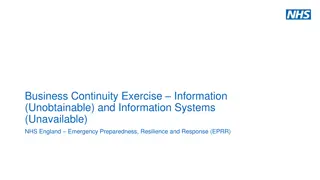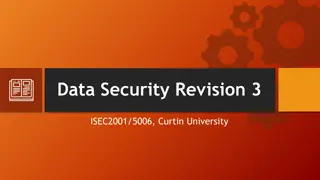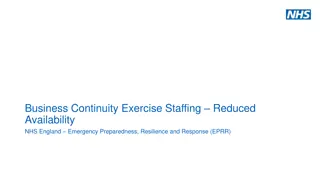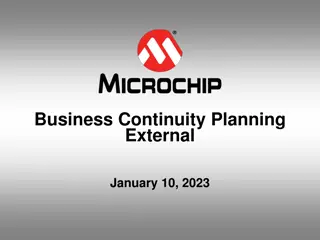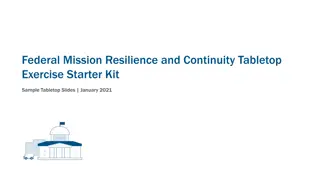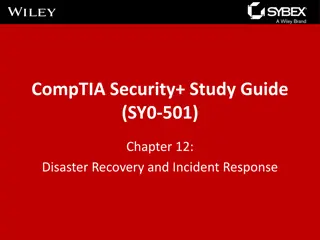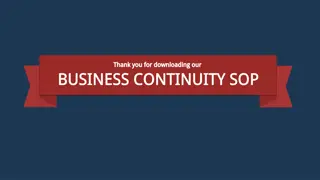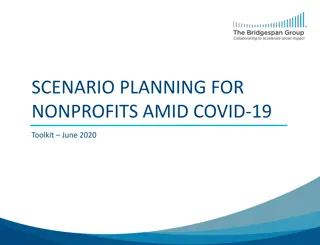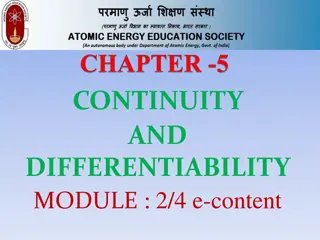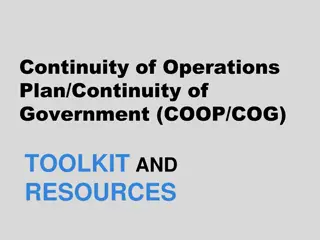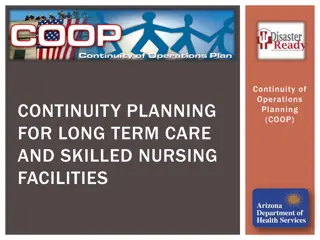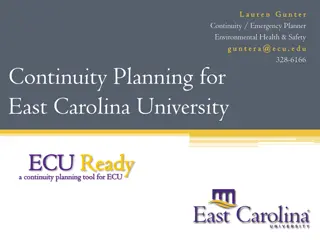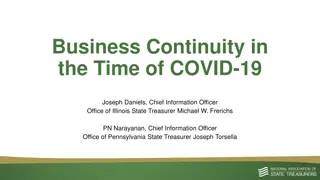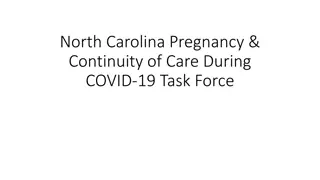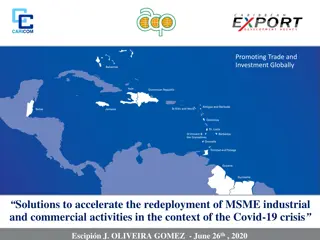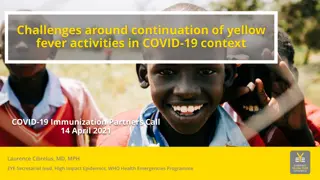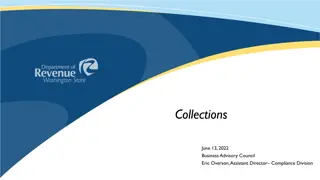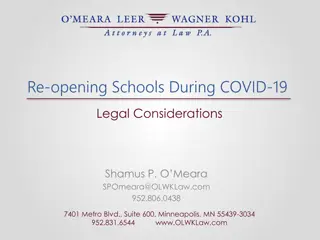Supporting Research Continuity Amid COVID-19 Challenges
Supporting students in their research endeavors during the disruptions caused by COVID-19. Lessons designed to assist with scholarly inquiries, data collection, and method revisions. Addressing concerns regarding method implementation and revisions due to pandemic-related limitations.
Download Presentation

Please find below an Image/Link to download the presentation.
The content on the website is provided AS IS for your information and personal use only. It may not be sold, licensed, or shared on other websites without obtaining consent from the author.If you encounter any issues during the download, it is possible that the publisher has removed the file from their server.
You are allowed to download the files provided on this website for personal or commercial use, subject to the condition that they are used lawfully. All files are the property of their respective owners.
The content on the website is provided AS IS for your information and personal use only. It may not be sold, licensed, or shared on other websites without obtaining consent from the author.
E N D
Presentation Transcript
Interruptions to your Research Process Supporting students as they continue their research during COVID-19
A Virtual Lesson from Emily Lott Sam Chiang Chestatee High School Gainesville, Georgia Upland High School Upland, California
Lesson Goal: This lesson will support students who are unable to move forward in their projects due to the ramifications of COVID- 19 LO 1.5B: Designing, planning, and implementing a scholarly inquiry.
Reflect on your stage of the research process Where are you in the research process? Are you mid-way through your data collection but you have concerns about gathering enough data to reach a new understanding/ conclusion? Have you collected all of your data and moving into the revision process of your Academic Paper? Are you trying to revise your method to even start your data collection process? When you are ready: Pause the video to complete this activity.
Two Major Situations Situation 1: You cannot conduct your method as written or with revisions Situation 2: Your method was partially conducted as written or with revisions.
What you Need to Know
Finishing the Research Process to get to a new Understanding New Understanding/ Conclusion Evidence Method
Situation 1: You cannot conduct your method as written or with revisions
Situation 1: Method cannot be conducted Example: Your method cannot be completed due to COVID-19... You planned on conducting interviews in a Skilled Nursing Facility (SNF). You are no longer allowed to visit the SNF. You cannot answer your research question because you lack data to analyze. You attempted to revise your method to conduct interviews virtually. However, the SNF would not allow these interviews to continue...
Option 1: Secondary Data Set Do not delete your original, reasonably replicable method Logically defend why your method could not be completed as written or with revisions Method New Data Set Describe logical selection of secondary data Describe new data set credibility and alignment for research question Analyze the secondary data to gain new understanding Use a logical, organized line of reasoning Analysis Justify new understanding based on secondary data Describe connection between new understanding to original question Describe limitations of this data set to your conclusions Describe implications of these conclusions to the community of practice Conclusion
Option 2: Theoretical Approach Do not delete your original, reasonably replicable method Logically defend why your method could not be completed as written or with revisions Method Describe and/or display theoretical results for both situations below: If my hypothesis was supported, data would have looked like If my hypothesis not was supported, data would have looked like Create and use clear labeling procedures for this information Theoretical Results Analyze the theoretical results for both situations to gain two new understandings Use a logical, organized line of reasoning Analysis Justify both theoretical new understandings based on theoretical result Describe connection between new understanding to original question Describe limitations of results to your conclusions Describe implication of these conclusions to the community of practice Conclusion
Situation 2: Your method was partially conducted as written or with revisions.
Situation 2: Method was partially conducted Examples: Your method was partially completed before COVID-19... You gathered 20 out of 100 in-person questionnaires... You were partially through data collection through an experiment in a lab This leaves you without ideal quantities of data to analyze for your paper. Your design or creation was partially developed
Two Options Explore Explain Creative Process
Option 1: Explore and Explain Research Method Do not delete your reasonably replicable method as written or revised Logically defend why your data collection process could not be completed as written or with revisions Describe and/or display the results you were able to collect Data Collection Analyze the data that was collected Use a logical, organized line of reasoning Analysis Justify new understanding Describe connection between new understanding to original question Acknowledge and describe the clear limitations of this small data set to your conclusions Describe implication of this conclusion to the community of practice Conclusion
Option 2: Create Research Do not delete your reasonably replicable process as written or revised Process Design/ Build Process Logically defend why your process could not be completed Describe challenges that COVID-19 brought to your design process Describe the components of the product that you were able complete through the design process Analyze personal learning of engaging in the design process through current challenges Analysis Describe what this personal learning about the design process means for engaging in future design during challenging times Describe implications of personal learning to the community of practice Conclusion
I have attempted to conduct my original, proposal-approved method AND I attempted to adjust my method to be conducted after COVID-19 outbreak but I m stuck. SITUATION 1 SITUATION 2 I have no data to work with because my adjusted method is still not able to be conducted. I have some data, but it is not as much as I originally wanted to reach a new understanding. Option 1 Secondary Data Set Option 2 Theoretical Results Option 1 Explore Explain Option 2 Creative Process
Pressing Forward: Reflection Questions Data Collection: 1. Do I have any data already collected? 2. Is this data enough to create conclusions, even if they are limited? 3. Can I continue to collect data? 4. Can I begin to collect data? 5. Are there other, innovative ways that I can collect data considering the current constraints? 6. What secondary sources of raw data can I locate? 7. Can I use theoretical results to come to a new understanding? Pause the video to complete this activity. When you are ready:
Debrief and Summary
Lets revisit some major points: Keep your original/revised, proposal-approved method Clarify your attempt to revise your method to continue your research Defend your inability to move forward in the research process and/or data collection Clearly justify and align your next steps Maintain a line of reasoning from your method, through your analysis, to your new understanding Limitations of the conclusion you can make are critical to describe Connect your new understanding to the body of knowledge and field of practice
Looking forward: Analysis and Conclusions 1. How can I generate a clear line of reasoning that will support the answer to my research question? 2. How do I use the parameters of my research field s body of knowledge to justify my findings? 3. How does my data limit the breadth of my conclusions? 4. What are the implications of my conclusions for the community of practice? When you are ready: Pause the video to complete this activity.
Device and Internet Access We know that not all students have access to the internet or a device. We re working on solutions to help students get what they need to show their best work. If you need mobile tools or connectivity or know someone who does, you can reach us directly to let us know. cb.org/tech
Thanks for watching!


